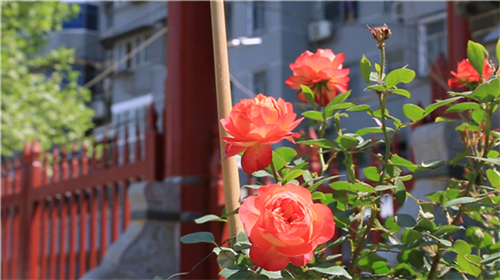豹纹守宫能活多久?它们的寿命有多长
Do you want to know how long a leopard gecko will live before committing to it as a pet owner?
Would you like to help your pet live its longest and best life?
Anyone reading this post is a responsible and loving pet owner already because you want to make sure your pet has everything it needs.
It’s helpful for new owners and experienced alike to know how long one of these pets live and how to help it live its full potential.
This is why we wrote this post to help answer the question:
What is the lifespan of a leopard gecko?
Leopard geckos live up to 15 years in the wild and up to 20 years as a pet. On average, the lifespan is shorter than both of these by a few years, with the wild geckos living typically shorter than the 15 years by anywhere from 3-5 years.
Look ahead for more details and advice on how to help your gecko reach its potential.
What Is The Lifespan Of A Leopard Gecko?This section covers more details on the answers to our question from before.
We’ll also look at why there is a difference Between life expectancy Between the two.
Lifespan In The WildIn the wild, a common leopard gecko is known to live up to 15 years.
This is the maximum, but it’s often a little lower than this.
Leopard geckos in the wild are given access to more nutritious insects.
This is because the insects eat more natural foods than what we typically give them in captivity.
However, there will be periods when the leopard geckos go without eating as much as they should.
It just happens to be this way in the wild.
Maybe a predator has moved in nearby, and the gecko is waiting for them to clear out so the geckos won’t hunt for insects.
Perhaps the weather is colder, which makes the common leopard gecko sluggish.
Leopard geckos are also more prone to illness in the wild, which isn’t treated by modern veterinary medicine and lowers their appetite.
There is also a great deal more stress on the leopard gecko.
They have to avoid potential predators, which add stress to the body.
This consistent stress shortens lifespans as well.
Of course, there’s always the fact a predator may end up catching and killing them in the first place.
In short, all the stress shortens their life spans, and predators can cut it off quite early.
How Long Do Leopard Geckos Live As Pets?As pets, we should expect them to live longer than in the wild.
In the case of the leopard gecko, we do see this trend.
Pet geckos tend to live for up to 20 years, with the average being around 15 or even a little higher.
The main difference causing this is the stable habitat, diet, and lack of stressors.
Of course, without proper care, your leopard gecko will still pass on earlier than you’d like.
Learn proper husbandry by checking out our leopard gecko care sheets.
Quite a few leopard geckos won’t reach their maximum age due to poor care conditions.
You need to learn to care for them, especially to care for baby leopard geckos.
Check out our guide on how to care for baby leopard geckos by clicking the link.
However, with a watchful eye and steady needs provided, your pet could live up to this 20-year mark.
How To Increase Leopard Gecko LifespanIt’s a simple matter of providing the necessary corrections, removing stressors, and watching out for illness.
Here is our quick advice on what you need to do.
Provide Correct HabitatThe habitat needs of the leopard gecko are pretty easy to reach.
20-gallon glass terrarium longer than it is tall
90° degrees Fahrenheit (32° C) ground temp and 72° degrees Fahrenheit (22° C) air temp during the day and shut off heaters at night
10-30% relative humidity
A safe substrate such as pea gravel or newspaper
Shallow water dish
Low rocks and branches to climb on
Hide box for resting
Speaking of humidity, check out our tips for lowering humidity in a leopard geck tank.
Steady DietA steady diet is one of the most critical elements affecting lifespan.
Follow the golden rule:
Feed leopard gecko two insects the size of the distance Between their eyes for every inch they are long every other day.
This is except for babies who need to be fed every day.
Good insects include:
Crickets
Mealworms
Dubia roaches
Click each link for more details on how many of each to feed and why you may choose them.
Remove StressorsLeopard geckos are skittish and troubled little critters.
They hide quickly, stress out easily, and even drop their tails off if they feel genuinely threatened.
Learn more about how leopard geckos regrow tails.
All this stress puts a toll on their overall health and lifespan.
In captivity, you have the power to remove the vast majority of these stresses.
Put the tank in a place without a lot of foot traffic, so the gecko doesn’t get a lot of sounds and moving shadows.
Don’t put the tank near any speakers or TVs, so the tank remains quiet.
Keep other pets such as dogs or cats away from the tank or out of the room as much as possible.
Get your pet used to you and be handled by taming your leopard gecko; click the link for our guide.
Watch For IllnessIllness happens with all animals, whether they’re in the wild or captivity.
As pet owners, our daily checks will let us know if something is up.
Then we can take them to the vet as soon as possible to get it fixed.
Watch for these common signs of illness.
When you see a few of them in combination, take your pet to the vet or give him/her a call.
Lack of appetite
Rapid weight loss/thinning
Changes in feces
Visible injuries
Dehydration (wrinkled skin & sunken eyes)
Seeming paralysis
Lying flat for prolonged periods
Jerky movements
Head tilting & circling
Liquid excreting from nose, mouth, or eyes
Lethargy
Difficulty breathing
Do Not Breed Your Female Leopard GeckoWhile it is very common for a female leopard gecko to lay eggs without mating, it is possible to increase her lifespan by not breeding her.
Producing and laying eggs takes a significant toll on the female gecko’s body.
When the female leo is gravid, you will need to provide her with additional calcium supplements and food to ensure she stays healthy.
Female leos are also prone to dystocia, otherwise known as egg binding.
If a female gecko is egg-bound, she will be unable to lay her eggs.
Dystocia often leads to cloacal prolapse, and it is fatal if left untreated.
By not breeding your female leopard gecko, you lower her risk of dystocia along with several other health issues.
A female leopard gecko used for breeding purposes has a life expectancy Between 6-10 years.
A non-breeding female leo will live Between 10-15 years with proper husbandry.
ConclusionIt’s important to know what the lifespan of the leopard gecko is to prepare for adopting it.
The tips we mentioned above will help it reach the full 20 years.
Sadly, most leopard geckos don’t reach this ripe old age because most owners don’t know how to keep its need met.
You do, so follow our recommendations and keep your oddly cute pet happy and healthy!
Commonly Asked QuestionsWhat Is The Longest A Leopard Gecko Has Lived?The oldest known leopard gecko lived to be 28 years old.
While this is not typical for leopard geckos, they will live for closer to 15-20 years with proper husbandry and care.
How Can You Tell A Leopard Gecko’s Age?The exact age of a leopard gecko is challenging to guess because its growth rate and size are highly dependent on the care the reptile receives.
Generally, baby leopard geckos have bands on their body instead of spots.
Once they are around one year old, these bands break up and morph into spots.
If your leo still has bands, it is likely to be less than one year old.
The best way to know the exact age of your leopard gecko is to consult the breeder where you purchased your pet.
The breeder will have a record of your leo’s hatch date.
If you did not purchase your leopard gecko from a breeder, it is possible to approximate the reptile’s age by using a comparison table such as the one below.
The table shows the typical size and weight range of a leopard gecko according to its age.
AgeAverage WeightAverage Body Length
Hatchling2-5 grams3”-4” inches
1 Month15-20 grams4” inches
2 Months18-30 grams5” inches
6 Months25-60 grams5”-6” inches
18 Months40-80 grams8”-11” inches
Is It Better To Have A Male Or Female Leopard Gecko?As a general rule, male leopard geckos tend to live longer and have fewer health problems than females.
Female leos produce and lay eggs whether or not they have mated.
Egg production and laying are very stressful to a female leopard gecko’s body, and these stresses will shorten her lifespan.
The average lifespan for male leopard geckos is 15-20 years, and for female leos, it is 10-15 years.
Aside from the differences in lifespan, leopard geckos of both sexes exhibit similar behaviors and have a docile temperament.
标签: SAGE









